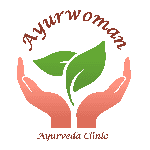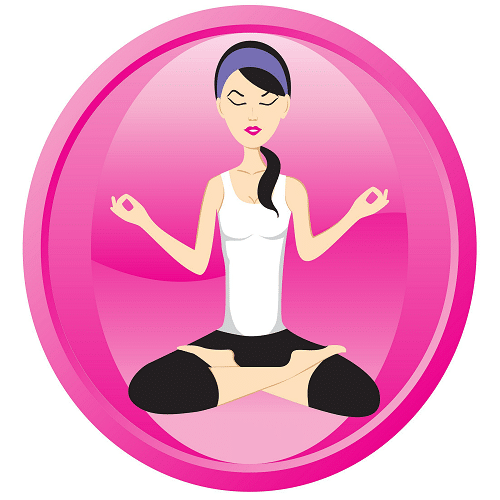Yoga postures for Beginners
As an introduction, it is important to realise that doing yoga on its own cannot make you lose weight. Use these yoga postures as part to complement your weight loss or weight management journey.
How does yoga work on your body?
Before going to the details of Yoga postures, let us examine how yoga asanas or postures work on the body to remove the excess fat. Each asana in yoga has a direct or an indirect effect on the internal organs of the body. Experts even recommend specific asanas diabetic patients to help facilitate insulin production by the body.
Stretches and twists performed as part of yoga asana have some benefits on our body.
- They make our body Flexible by loosening joints and thus regulating blood circulation
- The life force of prana flows throughout the body
- Essence of the food consumed is distributed evenly
- Oxygenation is complete with the help of rhythmic breathing process
- Efficient evacuation of wastes and toxins from the body
- Smooth and natural bowel movements
- Synchronize breath with the body movements
- Regulate blood pressure with the smooth blood circulation in the body
Some cautions before you start the yoga practice:
- Yoga asanas give better results when practiced in the morning hours preferably before 7
- It is better to control tea/coffee consumption to get good results
- Make sure that bowels evacuated from the body before the practice
- If you have bodily injuries, it is recommended, not to practice Yoga until the wound heals
- Don’t put strain while doing asanas. Do it naturally with your flexibility of the body. It will get corrected gradually. If you are not successful in doing a specific asana completely and perfectly, try to perfect it over a few days.
- Use a good yoga mat for doing asanas.
- While a yoga mat is not essential to perform yoga, use a yoga mat to make sure that a cold floor is not affecting your body when you lie on the mat. You may spread a thick blanket below the yoga mat if required.
Asana for beginners
It is not easy to be a beginner in any activity. Select those yoga poses that are easy to perform. Chose a comfortable space in your home. Chose a time of day that has less distractions. Start with shorter exercise durations and extent the duration.
Start with simpler poses that last for about six minutes. Stretch them to twelve minutes and then on to about 24 minutes. Don’t use these time limits as bench marks or targets. Use these times only at an indicative level.
During the early stages, it might be difficult to achieve a consistent pattern to do daily yoga. Try to start with twice or thrice a week and extend this to a daily practice regime.
Paschimotthasana
This asana can be read as Paschim Uththana Asana. Paschim translates to back side of human body and Uthana refers to raise, stretch etc. This asana can be translated as seated forward bend posture.
Steps for Paschimotthasana
- Sit and straighten your legs forward. Knees, toes together. The feet are straight, toe pointing upwards
- Keep the spine straight
- Inhale slowly and raise the arms over the head
- Exhale slowly and bend forward
- While bending, try to touch the feet with your fingers. It is better to wrap toes with the index and middle finger. While covering the toes, turn your hands so that the elbow touches both sides of the knees. Try to rest your head on the knees. It may not be possible in the initial stages, but gradually you can do it.
- Try to keep the spine straight to the maximum extent practicable, even while bending
Benefits of Paschimotthasana
- Increases concentration
- Balances the life force in the body
- Makes the mind calm
- Stretches the spine and legs
- Massage for the digestive organs, especially the abdomen
- Relieves stomach from constipation
- Stimulates the nervous system
- Full stretch for the backside of the body from the heels to the head
Some notes on Paschimotthasana
Don’t worry about the length of time you perform this asana. Don’t put any abnormal strain on your body performing this asana. You may not be able to place your head on the knees for a long time in the initial stages. But keep practicing, within one week you will pick up quickly.
Trikonasana
This asana can be explained as the Trikona Asana. Trikona is the simple triangle and Asana is the posture. Thus, Trikonasana can be translated as The Triangle Asana or The Triangular Asana.
Steps for Trikonasana
- Stand erect by keeping your legs at least two feet apart.
- Stretch your arms wide on the sides in the level of shoulders. Your arms are now almost perpendicular to the floor.
- Bend slowly towards your right side keeping the knee stiff and straight.
- Try to touch the right toe with the right-hand fingers.
- Bend your neck slightly towards the right so that it somewhat touches the right shoulder.
- Next is to stretch the left arm by raising up so as it appears to the continuation of the right and touching the right feet.
- Retain the posture as comfortable as possible. Breathe slowly and repeat the same on the left side.
- Now, left-hand fingers have to touch the left toe, and right arm is in the air similar to the previous posture with the left arm.
- Practice the asana 3 or 6 times on both sides.
Benefits of Trikonasana
- Lateral movements in this asana will strengthen the spine
- Pleasant to sit for meditation with increased concentration
- Tones and massages the nerves of the spine & the abdominal organs
- Stimulates the appetite by smoothening the bowel movement
- Relief from constipation
- Makes the body feel lightweight
Savasana
Savasana or Shavasana can be broken down as Sava asana. Sava means dead body or corpse. This asana is known as the corpse pose because of its nature of practice. It is relaxation asana. Practice this asana for relaxation between tiring asana sessions. Use this as a sandwich asana between other asanas of higher rigor.
Steps for Savasana
- Lie flat on your back, on the mat
- Spread your hands on the sides
- Stretch the legs quite straight possible
- Heels must be closer, separate the toes and eyes closed
- Breathe slowly.
- Start the process by visualizing the relaxation, from the toes.
- Relax all your muscles, joints, nerves, organs, everything.
- Visualise it in your mind. See your muscles and body parts releasing the tension.
- Slowly proceed to your calf-muscles, muscles of the back, spinal cord, chests, arms, and hands, neck, face, jaws, etc.
- You should finally reach the eyes, ending with the forehead.
- Continue to relax for 15 minutes.
Some people sleep in this asana. Don’t be shy if you fall asleep. With the regular practice, you will start gaining awareness. If you feel, you can count your breath after you relax the whole body in the above steps.
Benefits of Savasava
- Relaxation for the body and the mind
- Tissue respirations happens with the relaxation


